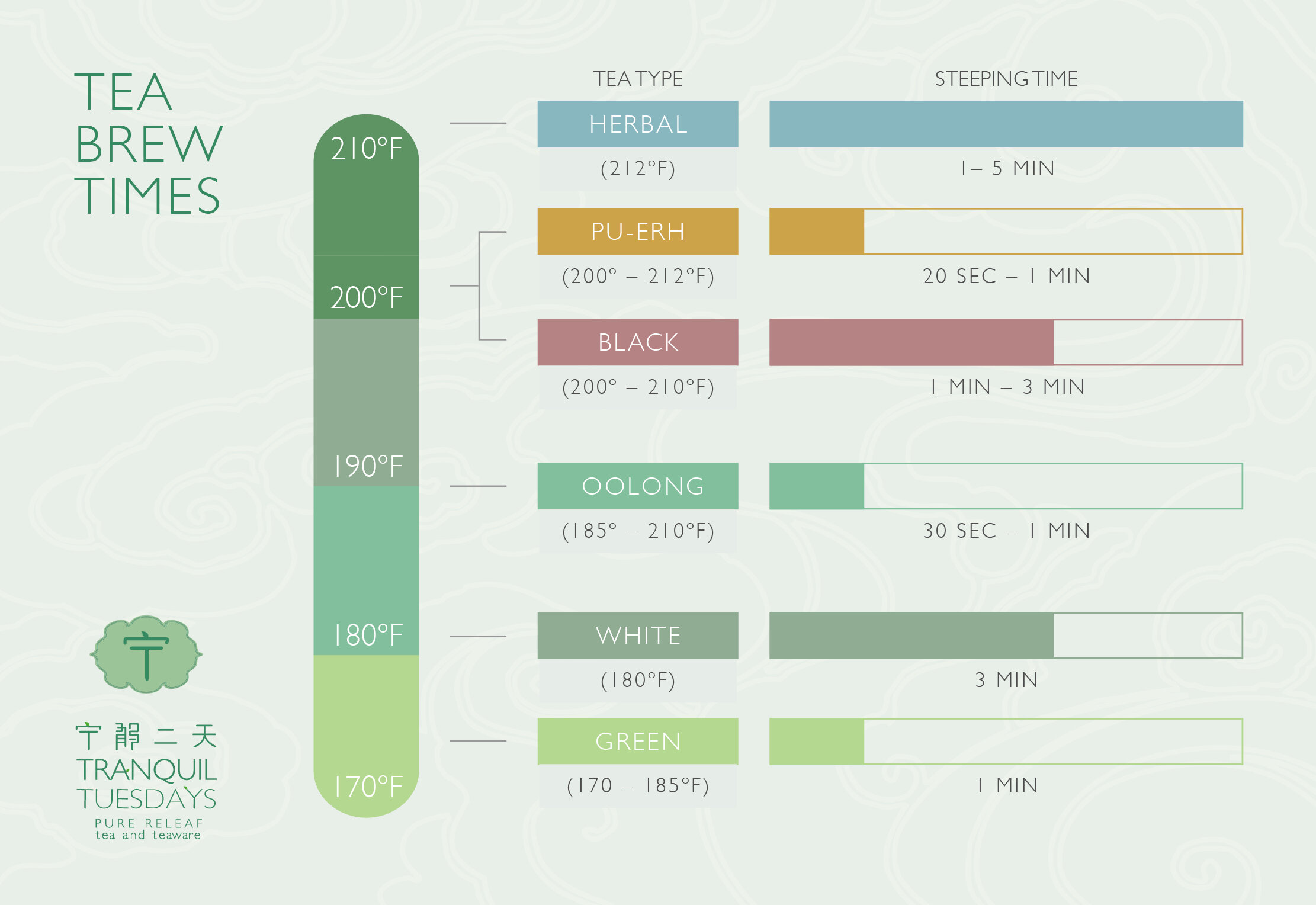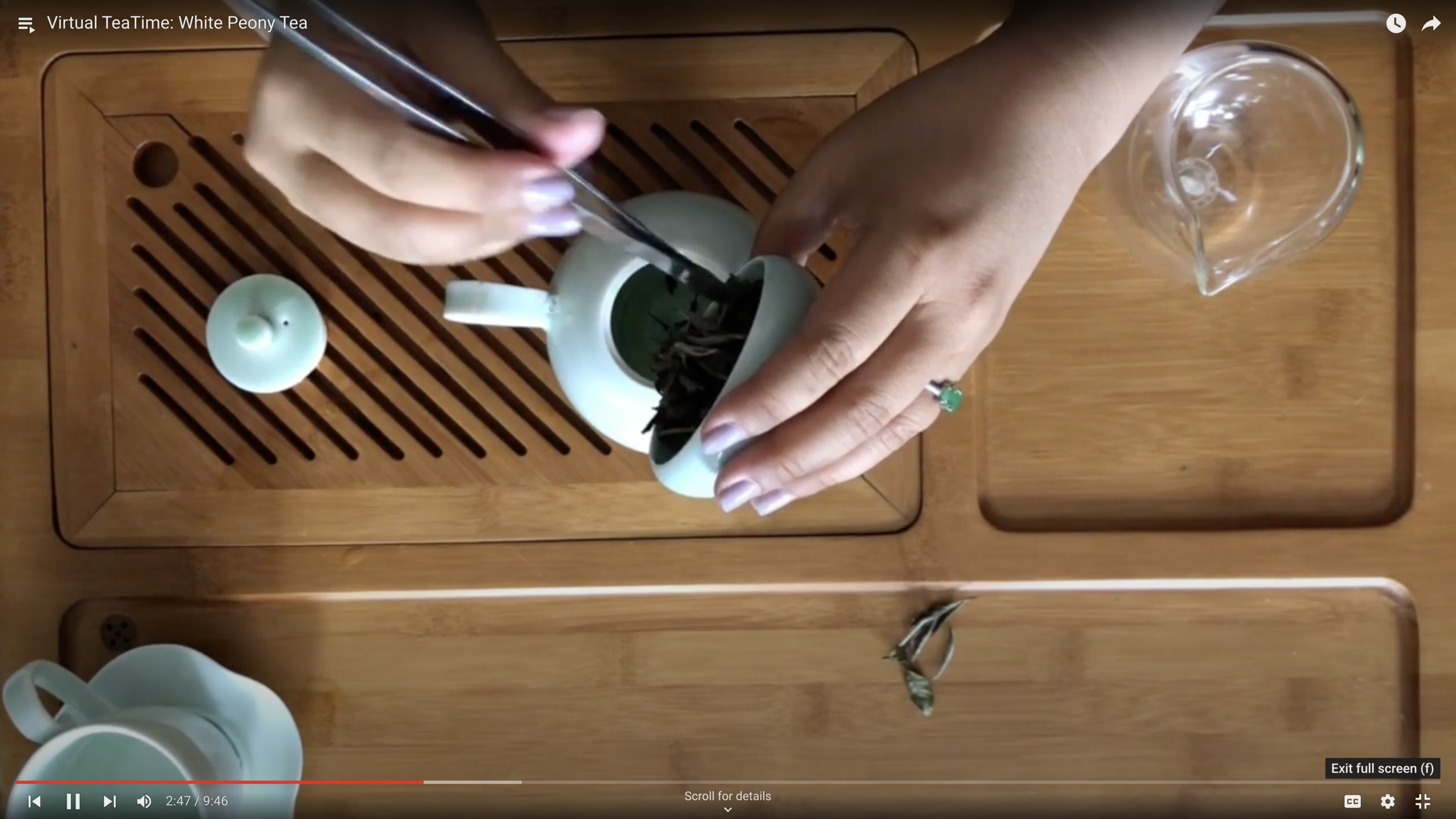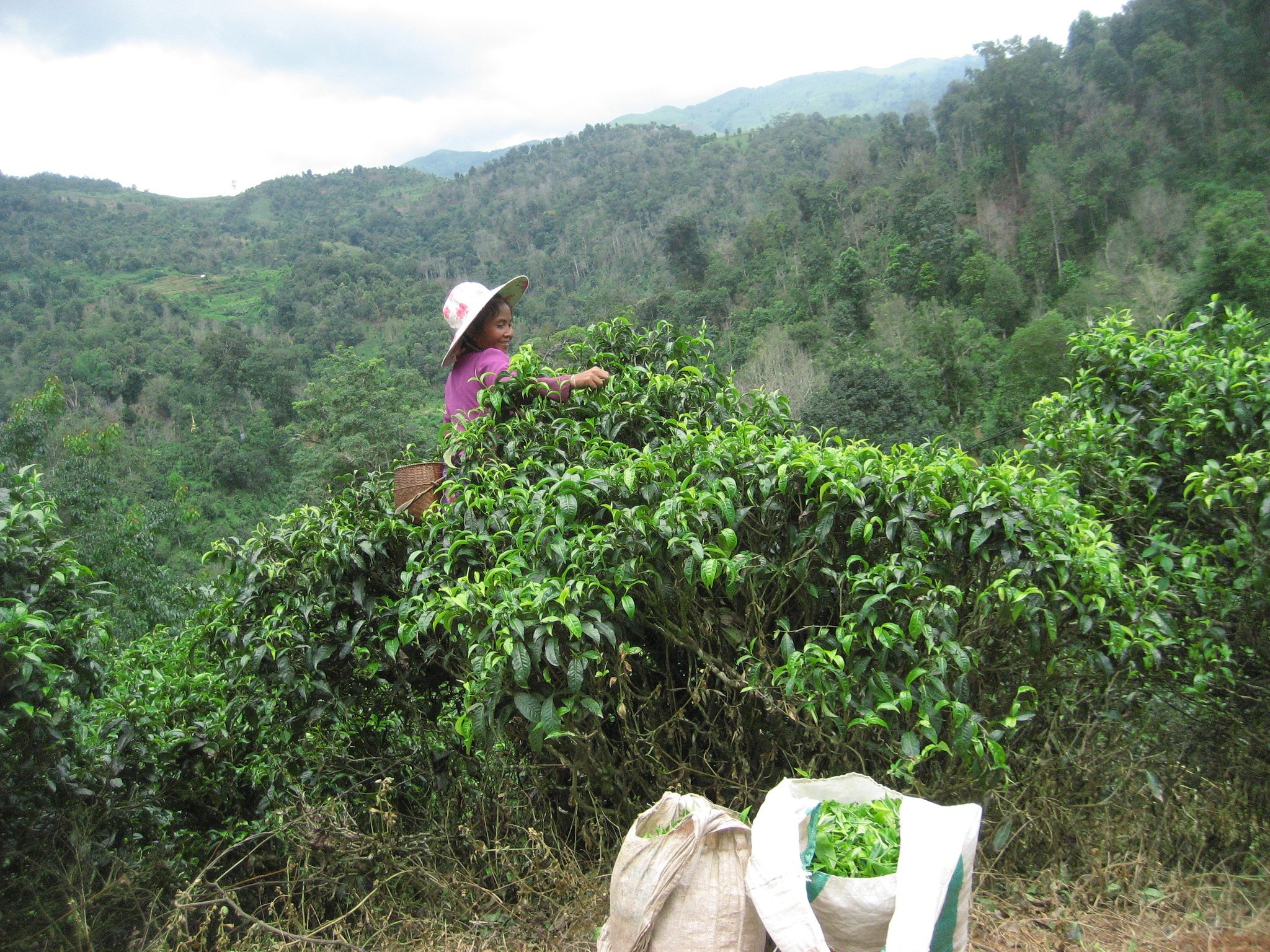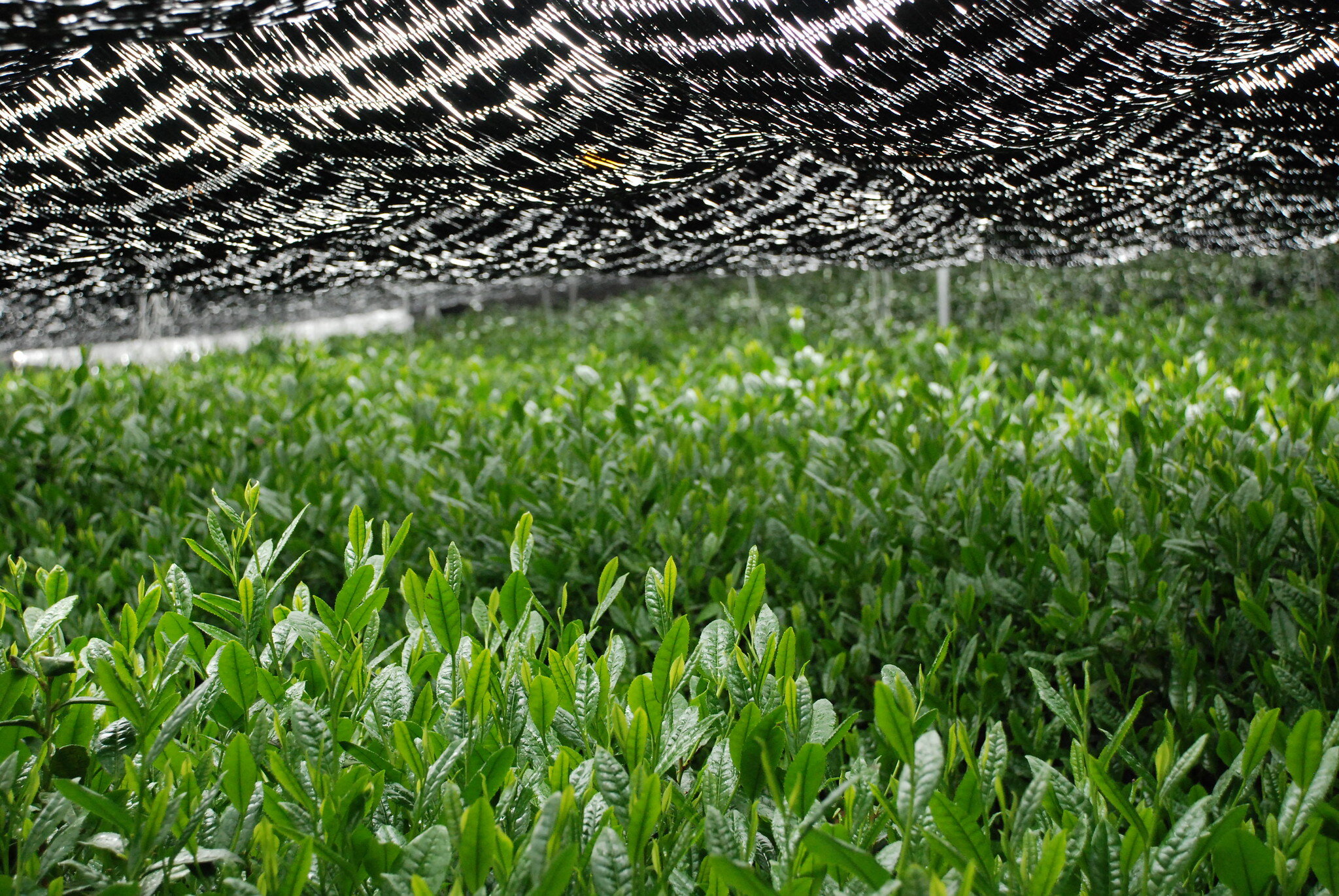Tranquil Tuesdays Tea Basics
Easy bite-sized stories to help you make the perfect cup of tea, learn a little bit about what tea even is, and answer your pressing questions about tea and health backed by science.

Make a Perfect Cup of Tea
This will noticeably improve your next cup of tea. Promise.
LISTEN to an interview about tea history and listener call-in Q&A I did with Alison Stewart on WNYC’s “All of It” show
Watch a video that breaks down the how-to's of brewing green tea focusing on the two main factors you have to pay attention to: temperature and time
You don’t need a fancy or complicated ceremony to brew tea optimally. You don’t even need a teapot. You just need to respect these basic principles for brewing the perfect cup of tea
A handy infographic I made just for you to help you learn the optimal windows for brewing each type of tea.
Watch a video on how to brew loose-leaf tea at home without any special teaware pieces. All you need is a mixing cup and a fork.
Watch a video where I discuss how your cup of tea is 98% water, so let’s all give our water a little respect while making a cup of green tea.
Watch a video made in collaboration with AsiaStore at the Asia Society in New York City, which shows you everything you need to know for a great cup of White Peony White Tea.
My step-by-step recipe for the ultimate cup of oolong tea for KCRW Good Food’s blog.
De-mystifying this extra little step that will help you get the most out of your tea leaves to make the ultimate cup of tea.
The basic things to keep in mind to store your teas and preserve their freshness for as long as possible.
Watch as I discuss why people use milk in their tea nad how milk and tea react chemically while brewing a cup of Qimen (aka Keemun) Black Tea.

What is Tea?
The plant, the beverage, the story, the culture, the global industry—all of it explained clearly and distilled to its essence.
READ and article on tea emoji and the history of tea I wrote for Smithsonian Magazine
All tea regardless of green or black tea (whatever the type) originates from the same tea plant: camellia sinensis. What makes a tea vs. an herbal leaf drink is whether or not the leaves came from the camellia sinensis plant.
Watch a video where I explain why herbal infusions, tisanes, and drinks are not actually technically tea.
The radicals that comprise the character 茶(cha) tell the elegantly simple story of how tea is a natural plant that we can enjoy as tea thanks to the people who help us harvest it.
The degree to which a tea leaf is oxidized, is the principal factor determining what category of tea the finished leaf will belong to.
Tea processing is the artful manipulation of heat and moisture to optimally control oxidation.
everything I’ve wanted to say and have been thinking for the last 10 years about regarding tea, its colonial history, and the legacy of that still today for Whetstone Magazine’s Online Journal.
View photos of ancient tea trees growing in Xishuangbanna, Yunnan in the region acknowledged as the indigenous root of the tea plant.
Read to learn what terroir means in relationship to tea and why it matters.
The three factors that to me, make Chinese tea special and distinctive from other tea cultures.
Watch a video where I discuss single origin teas vs. scented and blended teas while brewing a cup of Phoenix Honey Orchid oolong tea in a gaiwan.
Listen to me discussing the differences of tea-growing regions and especially how they manifest in Chinese vs. Japanese styles of green tea production on KCRW’s Good Food radio show and podcast.
View a photo gallery to see the differences in Japanese and Chinese tea growing and production styles of green tea.
Discover the taste of a tea’s natural flavors. I explain why this will give you a more exciting and more fun tea drinking experience.
Listen to the conversation I had with Evan Kleinman on her public radio show and podcast "Good Food” on KCRW.

Tea and Health
We all hear many claims of tea’s purported health benefits. But what claims are actually backed by science? We also include evidence based health ideas grounded in ancient traditions.
A scientific inquiry into why research has claimed health benefits. We go there with antioxidants, polyphenols, flavonoids and more.
Tea and Caffeine is a big topic, but we start with debunking the top two myths surrounding the topic.
Watch a video where I make green tea and discuss the traditional Chinese medicine concept of heating and cooling foods and how hot tea can be a cooling drink.
Traditional Chinese philosophy defines health as balance and harmony. This is a discussion of how tea fits into that and can contribute to helping us achieve balance and harmony in our bodies.
A mini scientific experiment to see how pH levels in water used to brew tea affect the final cup.
Why according to Traditional Chinese Medicine, green tea is a 取火 qu huo “cooling” drink.
Watch as I discuss why people use milk in their tea nad how milk and tea react chemically while brewing a cup of Qimen (aka Keemun) Black Tea.
































